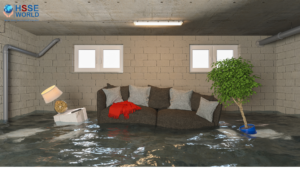Breaking Down the Emergency Response Guidebook
3 min readWhen an emergency incident happens at your facility, will you know where to go for valuable information? Understanding how to use the Emergency Response Guidebook before an incident happens is the key.


The Emergency Response Guidebook (ERG) first was released by the U.S. Department of Transportation in 1973. Since then, the ERG has undergone some changes and has evolved into an efficient and effective means of initial information during an emergency incident.
While some might think that this tool is just for use by emergency responders, they are mistaken. The ERG not only is useful to firefighters, police officers and EMS professionals, but to many others in a variety of industries.
The key to using the ERG is understanding how the guidebook works, and the process used to safely size-up our emergency incidents. This does not necessarily mean that an incident already has occurred.
The ERG is a great tool for pre-planning responses to the hazards associated with the materials we work with on a daily basis. The ERG is a tool for identifying the hazards and providing critical information on first aid, fire extinguishment and evacuation distances to protect ourselves, our workers and the community that surrounds our workplace.
Color-Coded Sections
From the first glance, you will notice that the ERG has four color-coded sections. The sections are color-coded for easy reference without having to know the page number. The 2016 ERG will have an expanded flow chart for ease of operation. It is important to understand what each of the sections covers.
Yellow – If you find yourself saying, “I only know the 4-digit UN number for this material,” then the yellow section will help you with your response. All you need is the UN number and you can look up the physical name and corresponding guide number for the material in the yellow section.
Blue – The blue section lists chemicals by name in alphabetical order. The blue section also will give you the cross reference to the UN number of a material and most importantly, the guide number associated with the material. Take care matching the spelling of the chemical name; there are several names that have similar spelling.
Orange – All other sections lead to the orange section. This section is the “meat and potatoes” of the ERG. The orange section gives the information on primary hazards and emergency response actions. Find the important information on PPE, evacuation distances, spill control, fire control and first aid measures in this section.
Green – Chemicals highlighted in green in the blue section or the yellow section shows they are toxic inhalation materials (TIH). TIH have specific initial isolation distance and protective action distance information. Be sure to keep in mind the location of the hazard. If the hazard is confined to a building, the evacuation distances will be different.
White – There is a host of specialized information in the ERG. The white section in front includes many of the specialized items that could be of interest to industry. It shows information on rail cars, trailer identification, placards and pipeline information. The white pages in the back of the book provide information on explosives, boiling liquid expanding vapor explosions and a glossary.
Changes for the New 2016 ERG
Scheduled to be releases in 2016, the new edition of the ERG includes the following changes:
- New instructions and flow chart
- Expanded table of placards
- Expanded rail car ID charts
- Updated TIH section
- Updated pipeline information
- Information on GHS (Global Harmonized System) symbols
It is important to train employees how to use the ERG. By using games and other methods of training, you can keep interest and skills fresh. Knowing how to use the information in the ERG is key in assisting in the safety of your employees and the neighbors around your business. A video highlighting the changes, and a new training game, the 2016 ERG Game, can be found at: http://hazmatsolutions.net/2016-erg-game-video/



